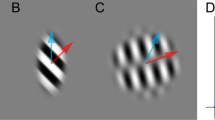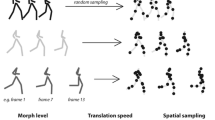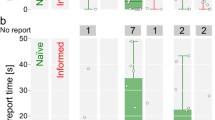Abstract
The term biological motion has been coined by Johansson (1973) to refer to the ambulatory patterns of terrestrial bipeds and quadripeds. In this paper a computational theory of the visual perception of biological motion is proposed. The specific problem addressed is how the three dimensional structure and motions of animal limbs may be computed from the two dimensional motions of their projected images. It is noted that the limbs of animals typically do not move arbitrarily during ambulation. Rather, for anatomical reasons, they typically move in single planes for extended periods of time. This simple anatomical constraint is exploited as the basis for utilizing a “planarity assumption” in the interpretation of biological motion. The analysis proposed is: (1) divide the image into groups of two or three elements each; (2) test each group for pairwise-rigid planar motion; (3) combine the results from (2). Fundamental to the analysis are two “structure from planar motion” propositions. The first states that the structure and motion of two points rigidly linked and rotating in a plane is recoverable from three orthographic projections. The second states that the structure and motion of three points forming two highed rods constrained to move in a plane is recoverable from two orthographic projections. The psychological relevance of the analysis and possible interactions with top down recognition processes are discussed.
Similar content being viewed by others
References
Flinchbaugh, B.E.: Visual interpretation of pairwise-rigid structure, forthcoming (1981)
Hoffman, D.: Visual motion perception as hypothesis testing, MIT AI Memo 630 (1981)
Johansson, G.: Visual perception of biological motion and a model for its analysis. Percept. Psychophys. 14, 201–211 (1973)
Johansson, G.: Visual motion perception. Sci. Am. 76–88 (1975)
Marr, D.: Vision: a computational investigation into the human representation and processing of visual information. San Francisco: W.H. Freeman 1981
Marr, D., Nishihara, H.K.: Representation and recognition of the spatial organization of three dimensional shapes. MIT AI Memo 416 (1977)
Marr, D., Poggio, T.: From understanding computation to understanding neural circuitry. Neurosci. Res. Program Bull. 15, 470–488 (1977)
Marr, D., Vaina, L.: Representation and recognition of the movement of shapes. MIT AI Memo 597 (1980)
Rashid, R.: Towards a system for the interpretation of moving light displays. University of Rochester Computer Science TR53 (1979)
Richards, W., Rubin, J., Hoffman, D.: Solving problems in natural computation. MIT AI Memo 614 (1981)
Ullman, S.: The interpretation of visual motion. MIT PhD Thesis (1977)
Ullman, S.: The interpretation of visual motion. Cambridge: MIT Press 1979
Webb, J.: Static analysis of moving jointed objects. Proc. AAAI, 35–37 (1980)
Author information
Authors and Affiliations
Rights and permissions
About this article
Cite this article
Hoffman, D.D., Flinchbaugh, B.E. The interpretation of biological motion. Biol. Cybern. 42, 195–204 (1982). https://doi.org/10.1007/BF00340076
Received:
Issue Date:
DOI: https://doi.org/10.1007/BF00340076




